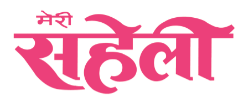This festive season, indulge in sweets guilt-free, knowing we have tips to help you keep them from ending up on and around your belly. Sagar Pednekar, fitness expert and manager, personal operations,
and Krupa Mhatre, nutritionist, chart out an extensive fitness and diet plan so that you can have your sweets and eat it too. Belly fat has been known to be the leading cause of a number of diseases. A little care can help you not only add years to your life but also enhance your gorgeousness.
A regular day’s diet
Introducing small changes in your daily routine, like shifting to small and frequent meals during the day is a good move. Even a heavy-breakfast-light-dinner diet chart plays a key role in such a diet. Remember that it is not always about losing the calories. Sometimes, you need to distribute the calories in such a way that you keep yourself evenly charged throughout the day, with the right combination of carbs, proteins, fats and fibres. Use the following guideline to help you bring about the change:
- Start your day with metabolism-boosters like lemon/barley water or green/herbal tea with a few nuts, or fruit. It will add to the benefits of having a healthy breakfast.
- Remember the adage ‘Eat breakfast like a king, lunch like a prince and dinner like a pauper’? It works well. Load up your breakfast so that it’s heavy enough to supply you with 30-35 per cent of your daily caloric requirements. It could be a bowl of oat-porridge or muesli with nuts in it, multigrain pancake with low-fat curd, 3-4 servings of fruits and a glass of low-fat milk, multigrain-sandwich with egg whites or chicken sandwich, with a cup of green tea or herbal tea.
- Ensure your lunch provides you 25-30 per cent calories; however, take care that it is a complete meal. Traditionally, Indian meals are high on carbs and low on fibers and proteins, which is seen as one of the primary causes of having large bellies. So start your lunch with ‘fillers’ like salads that are high-fiber foods, soups, raita, stir-fried veggies, etc. Veggies like spinach, fenugreek leaves, radish, amaranth, coriander, spring-onions, carrots, cucumber, bottle gourd and French beans can be a part of such preparations. Add to your lunch platter high-protein foods like dals, sprouts, chicken, fish and egg whites. Let carbs like multigrain roti or bread, brown rice and broken wheat make up only one-fourth of your platter. Remember not to consume too many fats like oil, ghee and butter. Opting for low-fat dairy products will help you keep a check on your fat consumption.
- Dinner should be the lightest of your meals, especially because you may not indulge in many activities, thereafter, to burn the extra calories consumed. Let your dinner provide 20-25 per cent of your daily caloric needs. The meal can be more or less the same as your lunch, with a lesser portion of carbs and fats.
- Mid-meals are important and can provide the remaining calories i.e., 15-25 per cent calories. Pace them out as mid-morning, late-evening or bed-time snacks. Remember to snack healthy, by adding a portion of fruits, dry fruits, nuts, oil seeds like flax seeds, green tea, buttermilk, salad, roasted pulses like chana and soyabean.
The workout diet
For those into working out, plan your pre- and post-workout meals, as per your exercise schedule. And remember to never exercise on an empty stomach. If you prefer to work out early in the morning, have a fruit or a few nuts with green tea or black coffee 20-30 minutes before your workout. It helps to kick start the metabolism and avoid muscle loss. If the workout timing is later in the day, keep a gap of at least an hour between the workout and the meal consumed before.
Your post-workout meal should be had immediately or within 20 minutes. Ensure that post-workout, you consume a high-protein meal that includes whey protein, chicken and egg whites, to promote fat burning and muscle gain. This will help in toning your abs and muscles and losing the fat around your belly.
Flat abs on the way
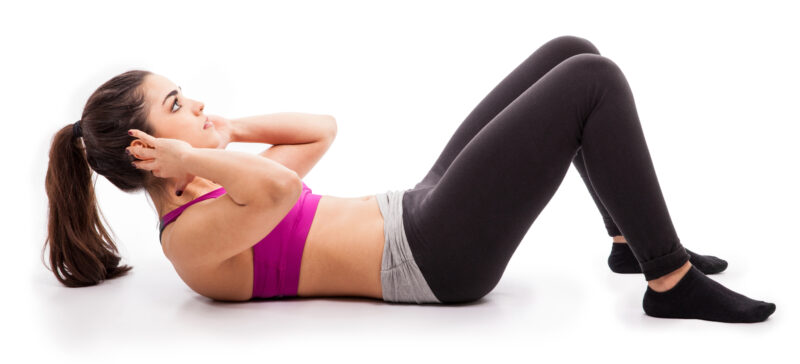
Basic Abdominal Crunch
How to do it: Lie down on the floor with legs folded and arms crossed below the head. This becomes your starting position. Exhale and lift your body half way off the floor, crunching your abdomen. Inhale and return to the starting position. Try to do three sets, and 20-25 reps, per set.
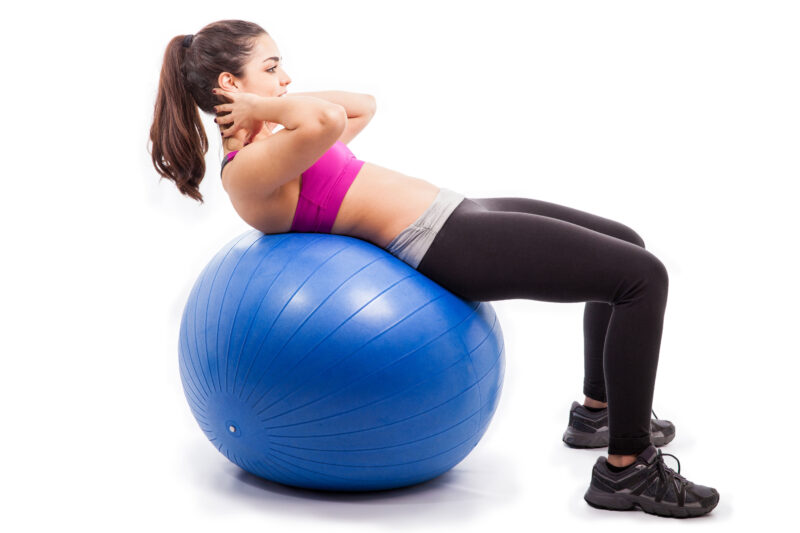
Swiss-Ball Abdominal Crunch
How to do it: Lie down on the Swiss ball such that your back is completely rested on the ball, with no gap between the lower back and the Swiss ball (as shown in the figure below). This becomes your starting position. Maintain the balance, exhale and slowly lift the upper body off the ball, crunching the abdominal muscles. Inhale and return to the starting position. Do three sets, and 15-20 reps, per set.
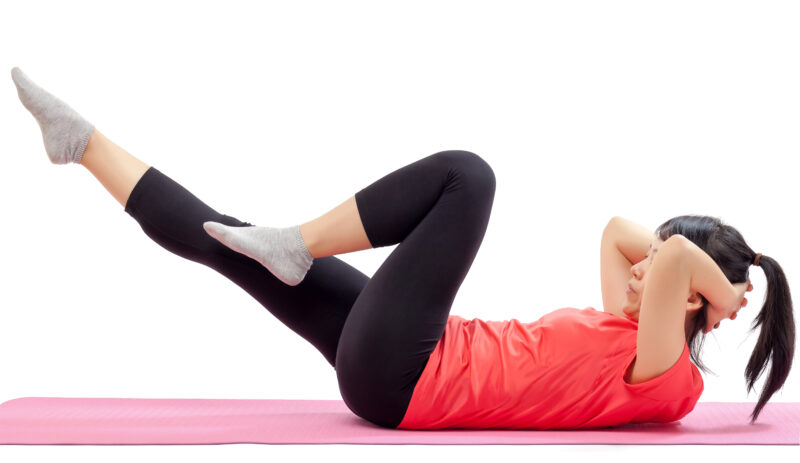
Bicycle Crunch
How do to it: Lie down on the floor with both the legs off the floor. Fold the legs, making a right angle at the knee joint. This becomes your starting position. Exhale and try to bring the right knee and left elbow together by lifting the body half way off the floor while contracting the abdomen and oblique muscles (sides). Repeat the movements on the other side. Perform three sets, with 20-25 reps, per set.
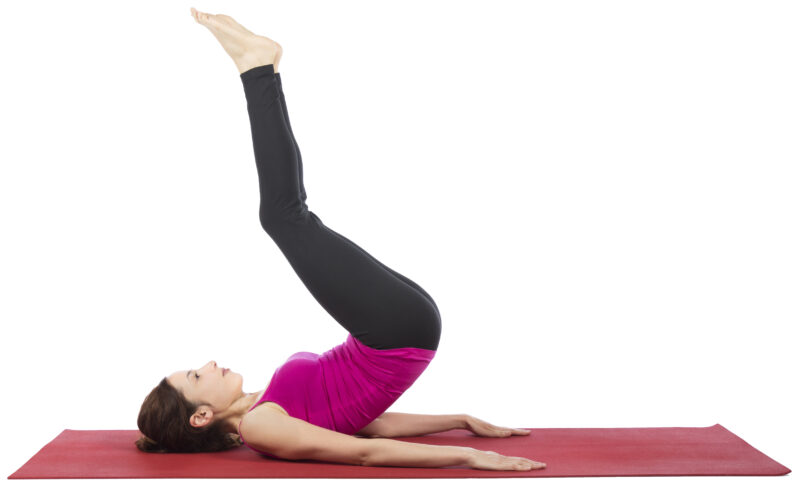
Reverse Crunch
How to do it: Lie down on the floor with legs folded at right angles. This becomes your starting position. Exhale and pull your legs towards your head while lifting your hips off the floor and contracting your lower-abdomen muscles. Inhale and return to the starting position. Perform three sets, and 15-20 reps, per set.
Swiss Ball Side Bends
How to do it: Stand holding a Swiss ball straight over your head. This becomes your starting position. Exhale and bend on one side, contracting the oblique muscles. Inhale and come back to the starting position. Repeat on the other side. Perform three sets, with 20 reps, per set, on each side.
Swiss Ball Twist
How to do it: Stand with the Swiss ball facing in front of the body. This becomes your starting position. Exhale and twist the body on one side, contracting the oblique muscles. Inhale and return to the starting position. Repeat on the other side. Perform three sets, with 15-20 reps per set.
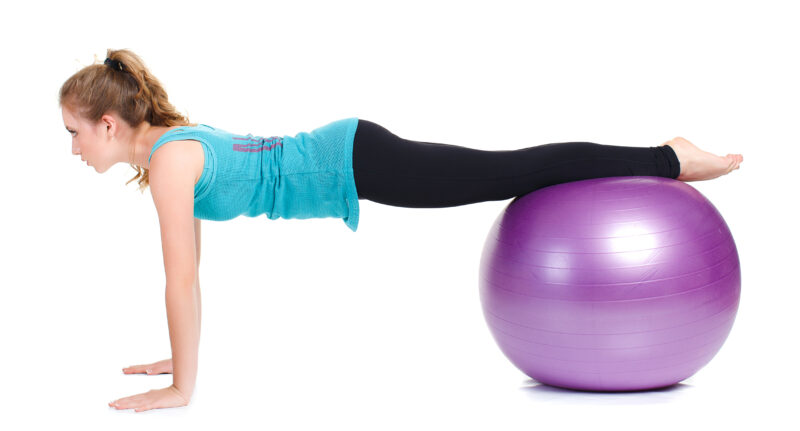
Swiss Ball Pike
How to do it: Lie on the Swiss ball, face down and hands on the floor. Start walking ahead with your arms, so that your legs are still on the ball, your trunk is parallel to the ground and arms are below your shoulders, at shoulder-width (as shown in the figure). This becomes your starting position. Exhale and pull the ball forward using your toes while pushing your hips upwards. Focus on the abdomen muscles while doing the same. Inhale and return to the starting position. Perform three sets, and 10-15 reps, per set.
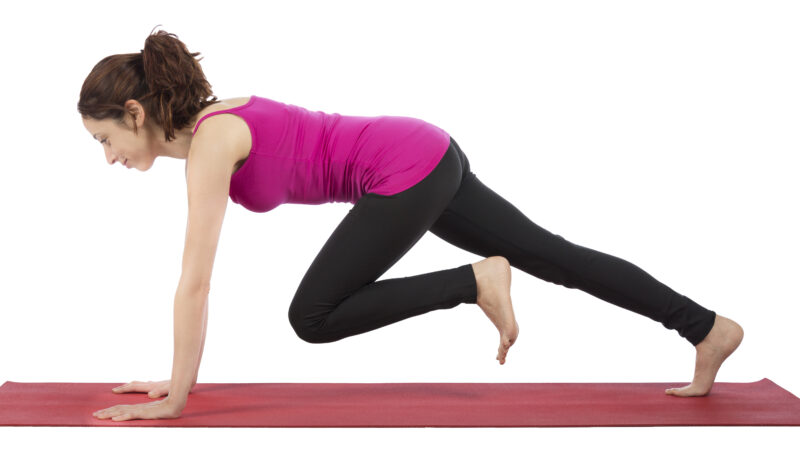
Mountain Climbers
How to do it: Start the exercise by maintaining a push-up position (as shown in the figure). Maintain normal breathing and throw your right leg ahead, as in a hop. Repeat with the left leg. Try to maintain the action for a minimum of 30 seconds. Perform three sets.
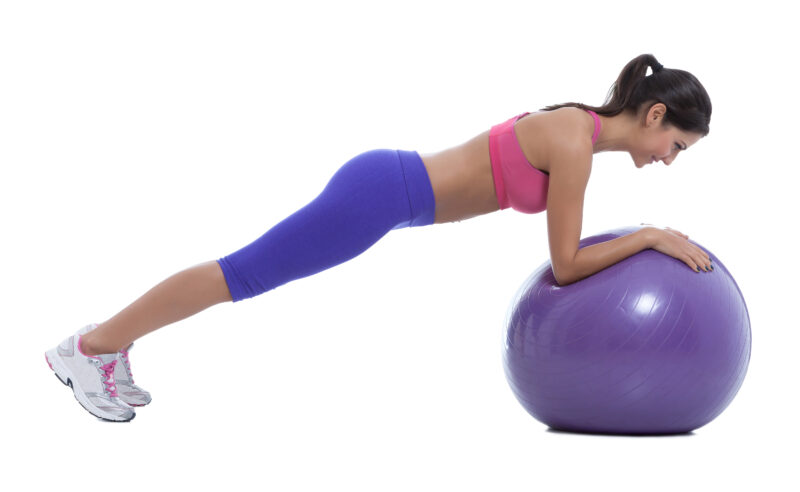
Swiss Ball Plank
How to do it: Rest your forearms on the Swiss ball, stretch your legs out on the floor and bring your abdomen to a neutral position. Maintain normal breathing and hold the position for 30 seconds. Perform a minimum of three sets.
Side Plank
How to do it: Balance your body on your forearms and stretch upwards. Ensure that your hips are completely off the floor. Maintain normal breathing and hold the position for a minimum of 30 seconds. Perform three sets.
(The experts are associated with Gold’s Gym, India.)
(Disclaimer: Consult your doctor or physiotherapist before following the diet or workout plan.)
